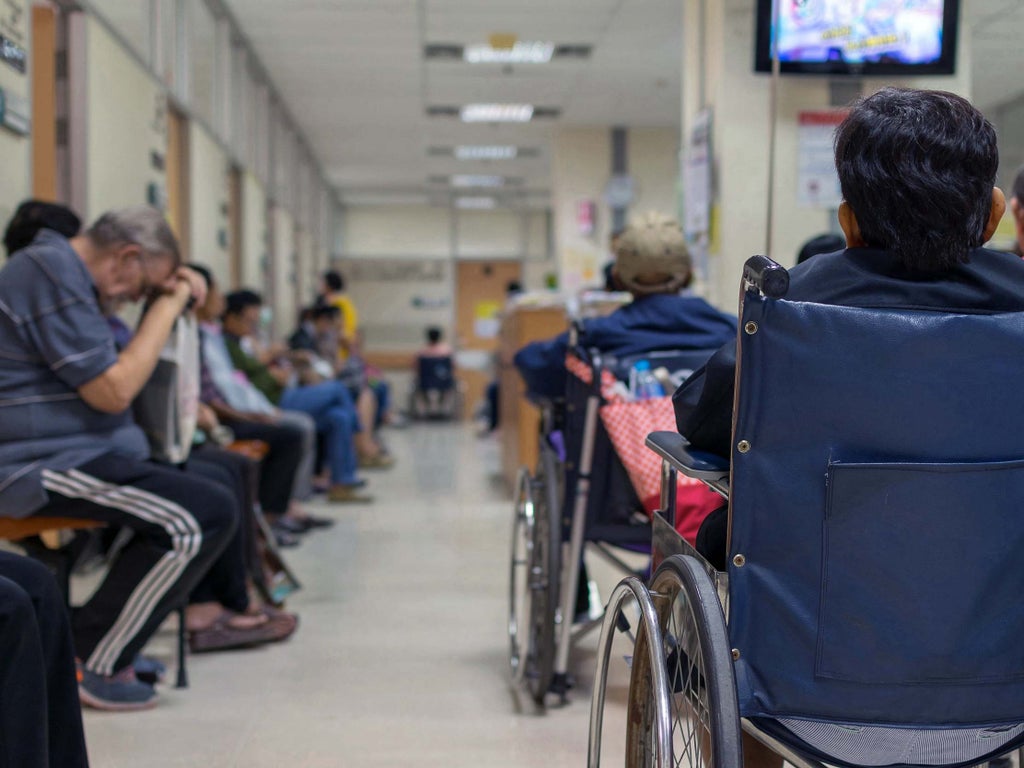
A new high of 6.4 million people in England were waiting for routine NHS treatment in March 2022, as 12-hour waits in A&E hit an all time high last month and ambulance services continued to struggle.
The number of people waiting for routine care in March was up from 6.2 million in February and is the highest number since records began in August 2007.
A new record of 24,138 people had to wait more than 12 hours in A&E, in April after a decision to admit them had been made.
The figure is up from 22,506 in March, and is the highest for any calendar month, in records going back to August 2010.
However, the number of patients being seen within four hours in April improved compared to March, with 72.3 per cent of patients seen in this time compared to 71.6 per cent.
The latest NHS data shows continued struggles for ambulance services accross the country as figures reveal average response times for potentially life-threatening conditions, such as strokes, was 51 minutes and 22 seconds in April.
This down from one hour, one minute and three seconds in March, which was the longest time on record for this category of call-outs. These calls should have a response within 18 minutes.
Ambulance response times for urgent calls such as late stage labour averaged two hours and 38 minutes in April. This is down from a record three hours and 28 minutes in March.
The news comes after The Independent revealed last week the real number of people waiting for more than 12 hours in A&E is far higher than the public data suggests. Thousands of people, often more than 3000, each day are left waiting more than 12 hours from after they arrive in A&E leaked data suggested.
The proportion of people being seen for cancer referrals in March was 80.6 per cent compared to 80.7 per cent in February. However, the number of people being seen within 62 days improved during the same period from 62.1 per cent compared to 67.4 per cent.
Quaterly data from January to March 2022 showed an all time low of 78.9 per cent in the proportion of people being seen within two weeks following an urgent referral for suspected cancer.
The Government and NHS England have set the ambition of eliminating all waits of more than two years by July 2022 and waits of more than one year by March 2025.
Data shows an improvement in the number of people waiting more than two years with 16, 79,6 down from 23,281 in February.
The number of people having to wait more than 52 weeks to start hospital treatment in England was 306,286 in March, up from 299,478 the previous month.
Siva Anandaciva, chief analyst at think tank The King’s Fund said: “Long waits for emergency care, previously only seen in the depths of winter, are now commonplace. Today’s data also show some ambulance service response times are still falling far below the national standards, even for patients with the most serious and urgent health needs.”
“The top priority for the NHS is to tackle the longest waits, so it is some comfort to see the number of people waiting over two years for planned care starting to come down.”
Dr Tim Cooksley, president of the Society for Acute Medicine, said: “The latest set of performance data shows that the new “normal” is at an unacceptably poor level for both patients and staff.”
He added: “The absence of significant plans in the Queen’s Speech to recognise the NHS and social care crisis is of grave concern.”
Professor Stephen Powis, national medical director for NHS England, said: “Today’s figures show our hardworking teams across the NHS are making good progress in tackling the backlogs that have built up with record numbers of diagnostic tests and cancer checks taking place in March, as part of the most ambitious catch up plan in NHS history.
“We always knew the waiting list would initially continue to grow as more people come forward for care who may have held off during the pandemic, but today’s data show the number of people waiting more than two years has fallen for the second month in a row, and the number waiting more than 18 months has gone down for the first time.
A spokesperson for the Department for Health and Social Care said it recognises the pressure NHS staff are under, particuarly ambulance service staff.
The statement added it has provided the NHS with £50 million in funding to support the increase in 111 calls.







